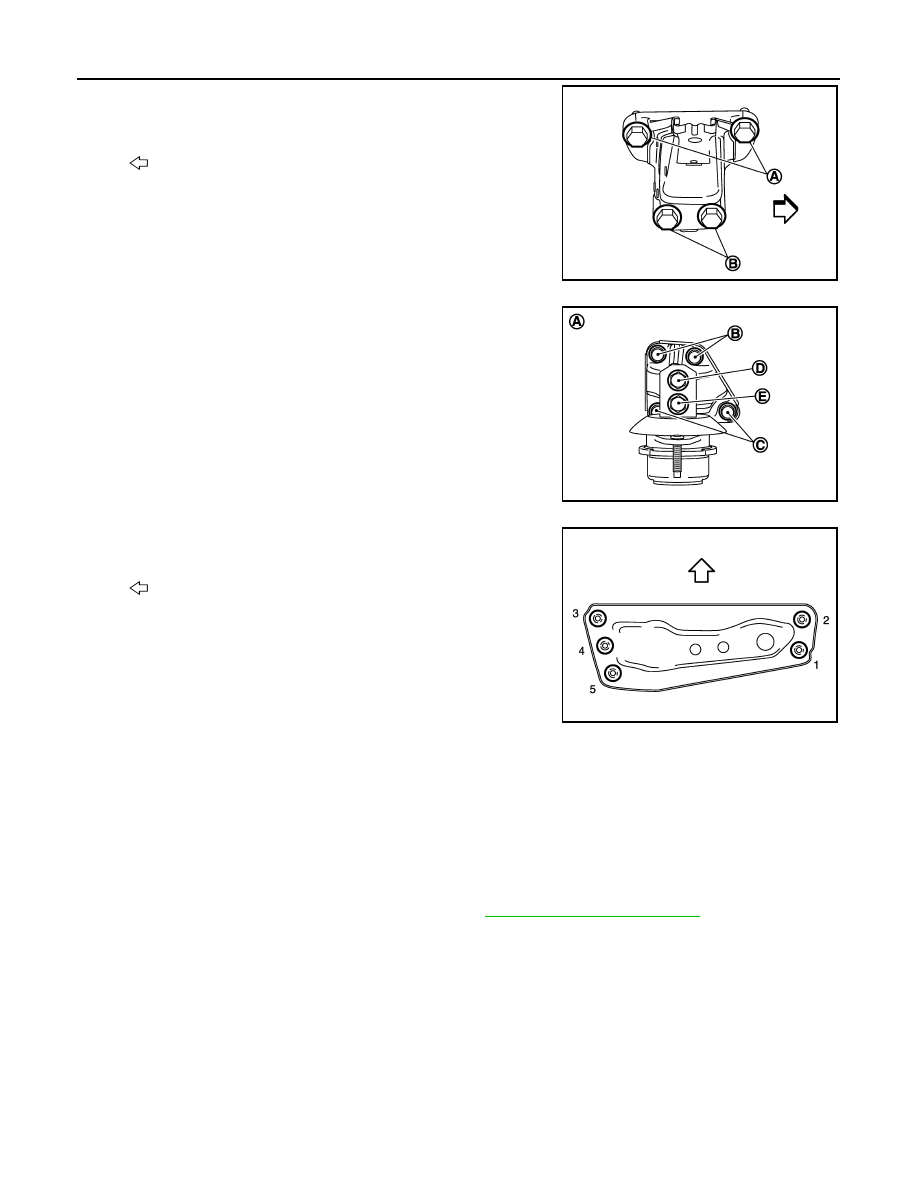Infiniti FX35, FX50 (S51). Manual - part 975

EM-200
< UNIT REMOVAL AND INSTALLATION >
[VK50VE]
ENGINE ASSEMBLY
• When installing engine mounting bracket (RH and LH) on cylinder
block, tighten two upper bolts (A) first. Then tighten two lower bolts
(B).
NOTE:
This figure shows an example of bank 2.
• When installing engine mounting bracket (rear) on transfer, tighten
two upper bolts (B) first. Then tighten two lower bolts (C).
• When installing engine mounting insulator (rear) on engine mount-
ing bracket (rear), tighten upper bolts (D) first. Then tighten lower
bolts (E).
• Tighten rear engine mounting member bolts in numerical order as
shown in the figure.
• Check that all engine mounting insulators are seated properly, then tighten mounting nuts and bolts.
Inspection
INFOID:0000000005245240
INSPECTION AFTER INSTALLATION
Inspection for Leakage
The following are procedures for checking fluid leakage, lubricant leakage.
• Before starting engine, check oil/fluid levels including engine coolant and engine oil. If any are less than the
required quantity, fill them to the specified level. Refer to
MA-12, "Fluids and Lubricants"
.
• Follow the procedure below to check for fuel leakage.
- Turn ignition switch to the “ON” position (with engine stopped). With fuel pressure applied to fuel piping,
check for fuel leakage at connection points.
- Start engine. With engine speed increased, check again for fuel leakage at connection points.
• Run engine to check for unusual noise and vibration.
NOTE:
If hydraulic pressure inside chain tensioner drops after removal/installation, slack in guide may generate a
pounding noise during and just after the engine start. However, this does not indicate a malfunction. The
noise will stop after hydraulic pressure rises.
• Warm up engine thoroughly to check that there is no leakage of fuel, or any oil/fluids including engine oil and
engine coolant.
• Bleed air from lines and hoses of applicable lines, such as in cooling system.
: Engine front
JPBIA2096ZZ
A
: Rear view
JPBIA2464ZZ
: Vehicle front
JPBIA2463ZZ